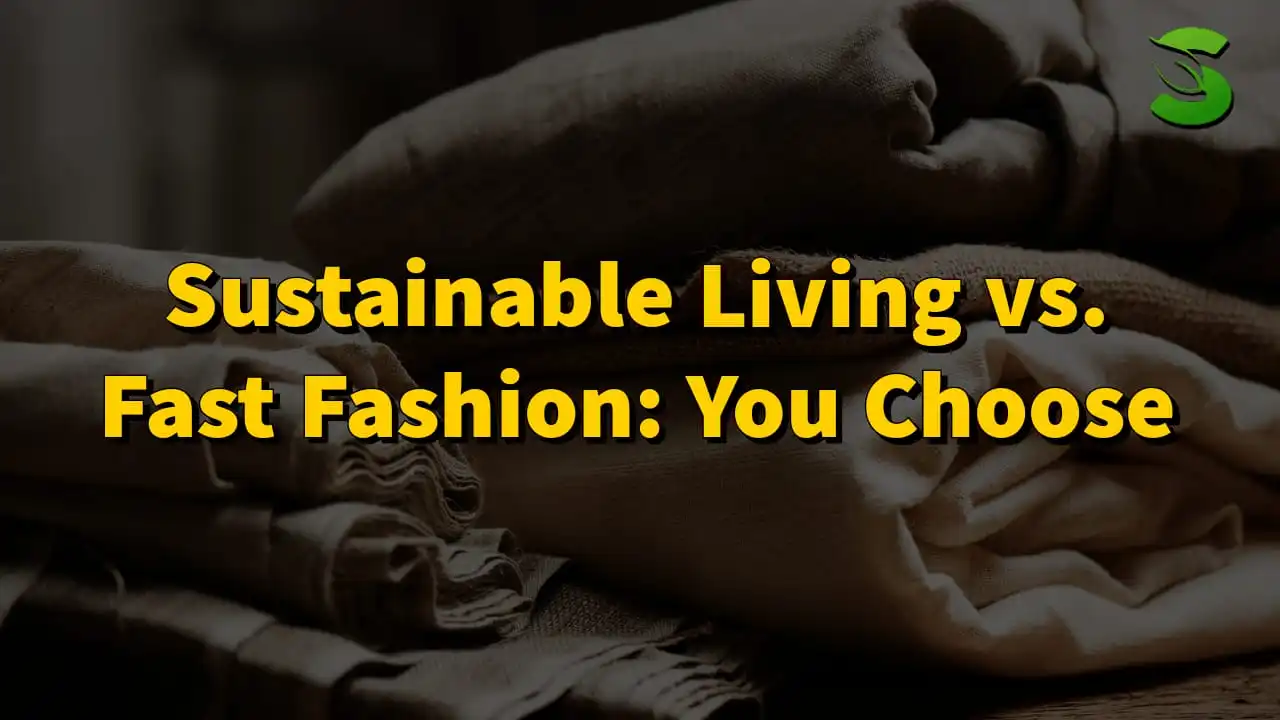Welcome to the thought-provoking world of Sustainable Living vs. Fast Fashion. As we navigate the complexities of modern life, it’s crucial to ponder our choices. Are we contributing to environmental degradation and exploitative labor practices through our fashion choices, or can we make a change that benefits both us and the planet? This article explores the options, challenges, and solutions surrounding sustainable living and ethical fashion choices.
Sustainable Living vs. Fast Fashion: You Choose – The Key Decision
The Dilemma
The clash between Sustainable Living and Fast Fashion isn’t a new one. Fast fashion’s allure is undeniable – trendy, affordable clothing at your fingertips. But there’s a hidden cost, from environmental pollution to unethical labor practices. How can you make an informed choice?
In today’s world, sustainable living and ethical fashion are choices that not only reflect our values but can also bring about meaningful change.
Slow Fashion
Slow fashion is a movement that prioritizes quality over quantity. By investing in well-made, timeless pieces, you can reduce your environmental footprint and support fair labor practices. Slow fashion encourages responsible consumption, and many eco-conscious brands offer stunning alternatives to fast fashion.
When you choose slow fashion, you not only look good but feel good, knowing you’ve made a responsible choice.
Eco-Friendly Fabrics
Sustainable fashion embraces eco-friendly fabrics like organic cotton, hemp, and Tencel. These materials reduce the carbon footprint of your clothing and promote sustainable agriculture. Opting for garments made from these fabrics can significantly contribute to environmental conservation.
Secondhand Shopping
Buying secondhand clothing is not only budget-friendly but also an eco-conscious choice. Thrift stores and online marketplaces offer a wide range of pre-loved fashion items, reducing the demand for new, resource-intensive production.
Minimalism and Capsule Wardrobes
Minimalism and capsule wardrobes are trends that emphasize owning fewer items of higher quality. This approach encourages conscious choices and reduces waste. A well-curated wardrobe can be both stylish and sustainable.
Sustainable Living in Your Home
Sustainable living extends beyond fashion. It encompasses mindful choices in your daily life, from eco-friendly home decor to responsible energy consumption. Small changes in your home can have a significant impact on the environment.
Eco-Friendly Home Products
Opt for eco-friendly products for your home, from cleaning supplies to furniture. These choices reduce your carbon footprint and promote sustainability in your living space.
Energy Efficiency
Make your home more energy-efficient by using LED lighting, programmable thermostats, and proper insulation. Energy-saving habits can help you reduce your environmental impact.
Reduce, Reuse, Recycle
The three R’s – Reduce, Reuse, Recycle – are essential principles of sustainable living. By minimizing waste, repurposing items, and recycling materials, you actively contribute to environmental preservation.
Sustainable Transportation
Your choice of transportation can also play a part in sustainable living. Opting for eco-friendly transportation options benefits the planet and reduces your carbon footprint.
Public Transportation
Using public transportation, such as buses and trains, can reduce the number of individual vehicles on the road and decrease air pollution.
Carpooling and Ridesharing
Carpooling and ridesharing are effective ways to lower emissions and save on fuel costs. Sharing rides with others is not only eco-friendly but also a social experience.
Bicycling and Walking
Embrace the eco-friendly options of bicycling and walking for short commutes. These choices improve your health, save money, and reduce your carbon footprint.
Sustainable Food Choices
What you eat also matters in the sustainable living equation. Making mindful choices about your food can have a significant impact on the environment.
Plant-Based Diet
Reducing meat consumption and adopting a plant-based diet can lower greenhouse gas emissions and promote animal welfare.
Locally Sourced Food
Choosing locally sourced food supports local farmers, reduces transportation emissions, and ensures fresh, seasonal produce.
Reducing Food Waste
Minimizing food waste at home by proper storage and meal planning is a practical way to reduce your ecological footprint.
FAQs
Q: How can I adopt sustainable fashion on a budget?
A: By focusing on secondhand shopping, supporting sustainable brands during sales, and investing in timeless pieces, you can embrace sustainable fashion without breaking the bank.
Q: What are some eco-friendly fabric alternatives to traditional textiles?
A: Opt for organic cotton, hemp, bamboo, and Tencel, as these fabrics are environmentally friendly and sustainable.
Q: Is it possible to live sustainably in a fast-paced urban environment?
A: Absolutely! You can practice sustainable living in urban areas by choosing public transportation, using eco-friendly products, and making eco-conscious food choices.
Q: How can I reduce my energy consumption at home?
A: Improve your home’s energy efficiency by switching to LED lighting, using programmable thermostats, and sealing drafts in your home.
Q: Are there any sustainable fashion brands that I can support?
A: Many sustainable fashion brands prioritize eco-friendly practices, fair labor, and ethical sourcing. Some popular choices include Patagonia, Eileen Fisher, and Reformation.
Q: What are the benefits of minimalism and capsule wardrobes?
A: Minimalism and capsule wardrobes encourage mindful consumption, reducing waste and clutter while allowing you to curate a stylish, versatile wardrobe.
Conclusion
In the grand debate of Sustainable Living vs. Fast Fashion, the choice is yours to make. By opting for sustainable living and ethical fashion, you not only reduce your environmental impact but also support a more equitable world. Embrace responsible choices, and together, we can create a brighter future for all.








6 thoughts on “Sustainable Living vs. Fast Fashion: You Choose”